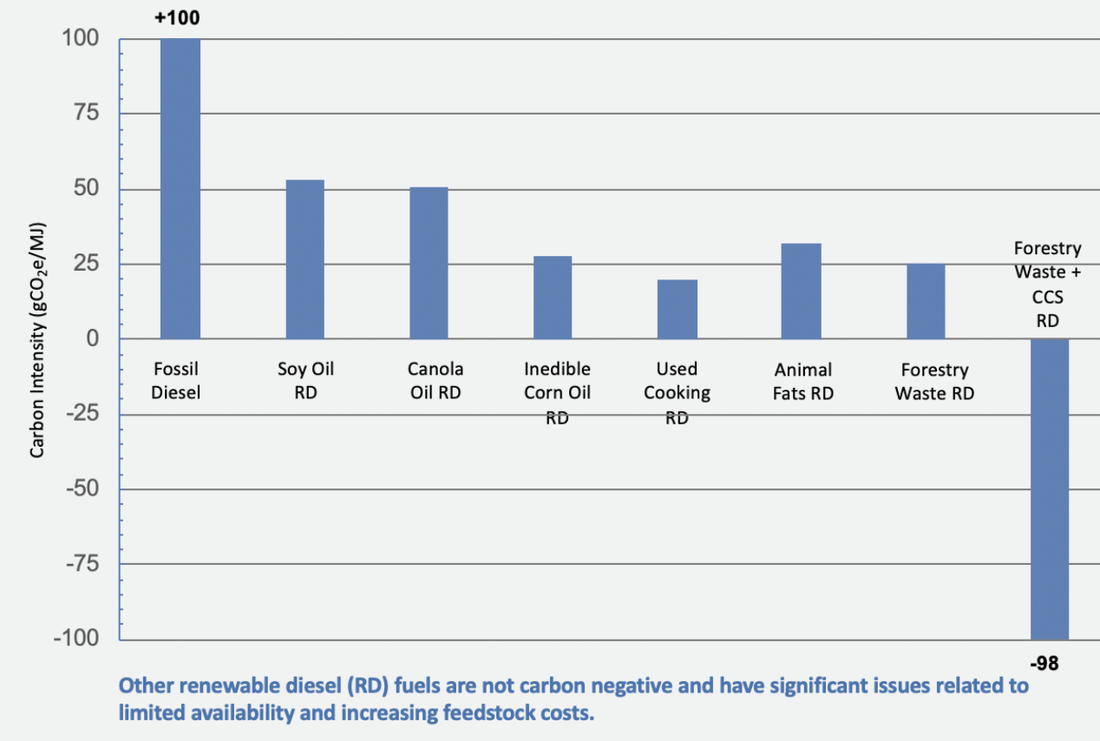Louisiana Green Fuels Fund Updates > When Carbon Negative is a Positive
When Carbon Negative is a Positive
Both governments and companies have increasing started publicizing steps they are taking to reduce our carbon footprint and ultimately get to “net zero” emissions, but what does that actually mean?
Both governments and companies have increasing started publicizing steps they are taking to reduce our carbon footprint and ultimately get to “net zero” emissions, but what does that actually mean?
Carbon Negative vs Carbon Positive
Carbon dioxide is the primary source of Greenhouse Gases (“GHG”) in the US, accounting for 80% of all emissions1 (although there are other sources such as methane, nitrous oxide etc.).
When we talk about GHG emissions, we are concerned about the quantities of those emissions. So, when somebody says something is carbon “positive” or carbon “negative,” they are not talking about a positive or negative connotation (i.e., good or bad) of a project, they are talking about whether it emits an amount of carbon greater or less than 0.
Any activity that produces carbon dioxide means it is a positive source of carbon i.e., it is carbon “positive.” And vice versa, something is carbon “negative” if it actually removes carbon from the atmosphere i.e., there is less carbon in the atmosphere after the process than there was before.
Here are some examples of carbon positive, carbon neutral and carbon negative processes and the differences between them;
Carbon Positive: These processes add carbon to the atmosphere. Fossil Fuels are carbon positive because when you burn them, they release carbon into the atmosphere.
Carbon Neutral: These processes don’t increase or decrease the amount of carbon in the atmosphere. Renewable energy sources are carbon neutral at point of generation i.e., there are no additional carbon emissions just because the sun is shining or the wind is blowing. However, when one accounts for the significant amount of concrete, plastics, electronics etc. required during the construction of wind and solar farms, they are actually modestly carbon positive over their usable lives. That is also before one considers the battery storage required for these types of energy sources.
Carbon Negative: These are processes where carbon has been actively removed from the atmosphere e.g., trees are natural carbon sinks, because they take in carbon dioxide as part of the process of photosynthesis as they grow.
Net Zero
As we mentioned earlier, corporates and Governments are increasingly setting themselves the goal of net zero emissions by a certain future date (2050 is frequently used as the target date2). This does not mean they are targeting no emissions. While governments and corporates will transition to energy sources dominated by carbon neutral sources, there simply are not enough of these sources to supply all of our energy needs. So current plans include some level of carbon positive energy sources, particularly in hard to decarbonize sectors like transport. That is why it is so important that we have carbon negative sources of energy, as these will be required to offset those carbon positive sources.
A True Carbon Negative Fuel
The Louisiana Green Fuels (“LGF”) project will take waste material, which would otherwise have most likely been burned, from local sustainably managed forests. They will convert this forestry waste and, crucially, they will also capture the carbon dioxide given off during the process and trap it underground indefinitely. So, the carbon dioxide will first be removed from the atmosphere by the trees, and then captured permanently underground in LGF’s sequestration well.
This is a carbon negative process. And that is a good thing. Based on fuels currently available, LGF anticipates that they will produce the most carbon negative transport diesel on the market in the US3. To put this into context, for every gallon of fuel from the plant that is used, it will be the Carbon equivalent of taking two gallons of petroleum diesel off the road4.
Fossil fuel consumption for energy accounted for 74% of total U.S. GHG emissions in 2020 across the major energy consuming sectors (commercial, industrial, residential, transportation and electricity generation). But not all fuel sources are created equal when it comes to carbon footprint; petroleum generates about 25% more carbon when burned vs natural gas. Coal emits about 80% more5.
-
https://www.epa.gov/ghgemissions/overview-greenhouse-gases
https://www.c2es.org/document/greenhouse-gas-emissions-targets/ & https://carbon.ci/insights/companies-with-net-zero-targets/
https://www.epa.gov/greenvehicles/greenhouse-gas-emissions-typical-passenger-vehiclehttps://www.epa.gov/greenvehicles/greenhouse-gas-emissions-typical-passenger-vehicle
https://ww2.arb.ca.gov/resources/documents/lcfs-pathway-certified-carbon-intensities vs estimated Carbon Intensity of Renewable Diesel produced at the Louisiana Green Fuels plant of – 100 gCO2e/MJ
Have more questions?
If you would like to learn more about the Louisiana Green Fuels project click below or email us at IR@ballastrock.com


